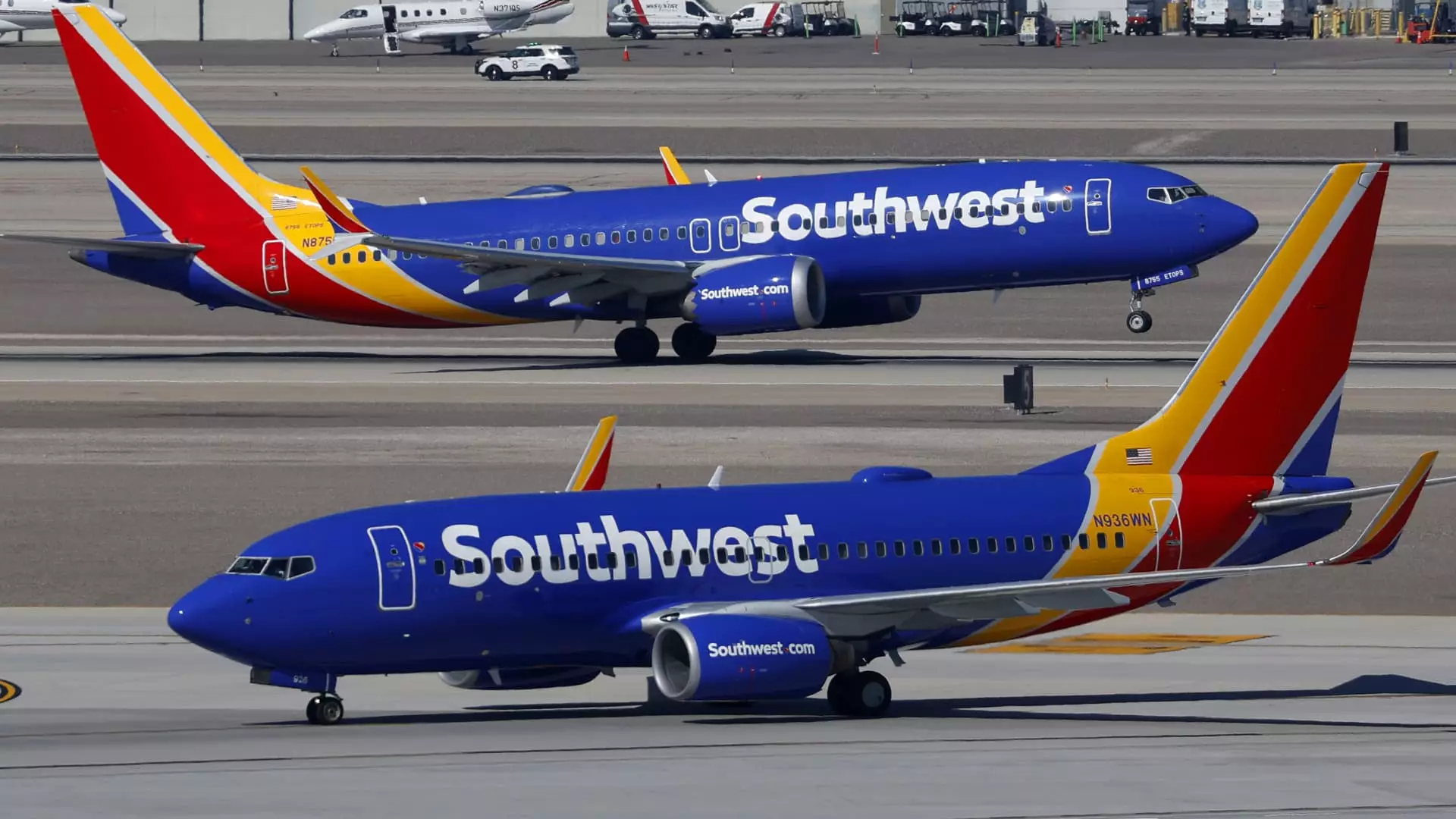For over half a century, Southwest Airlines has distinguished itself through its open seating policy—a system that fostered a sense of spontaneity and individual agency among travelers. This unconventional approach allowed passengers to choose seats upon arrival, creating an energetic boarding process that was as much a part of the Southwest experience as their famously generous baggage policies. Now, in an era defined by fierce competition and sky-high operational costs, Southwest is tearing up that tradition. Starting January 27, the airline will shift to assigned seating, marking a dramatic turning point. While this move may seem pragmatic from a business standpoint, it fundamentally alters the essence of what Southwest has represented for generations.
This decision taps into a broader strategic need for revenue diversification, which is no longer optional in the brutal landscape of air travel. Facilities like free checked bags and open boarding have created a loyal customer base but at the expense of profit margins. The move toward assigned seating isn’t just about maximizing revenue—it signals an identity crisis that could alienate longstanding advocates. Is Southwest genuinely prioritizing efficiency, or is it surrendering to the pressures of an industry that rewards dominance and profit over quantity of experience? In my view, this shift risks stripping away the spirit that made Southwest unique, potentially transforming the airline into just another player in a crowded, commoditized field.
The Underlying Economics and Competitive Pressures
Southwest’s strategic overhaul is driven by an urgent need to boost earnings and stay competitive amid rising operational costs. The airline’s announcement of nearly $800 million in expected gains this year and a projected $1.7 billion in 2026 underlines a clear desire to bring its financials up to par with more profitable rivals. The end of open seating aligns with these goals but also exposes Southwest to a new set of risks.
Charging for advanced seat selection, introducing new fare types, and shifting to assigned seating are core elements of a broader effort to extract additional revenue streams. This isn’t solely about staying afloat but about leveraging every tool available to maximize profit from each flight. Critics may argue this move commodifies the passenger experience further, turning what was once a free and flexible process into a paid privilege. Meanwhile, loyal customers—who valued the airline’s openness and simplicity—might feel betrayed, pushing them towards competitors that still uphold the open seating policy or offer more flexible options.
From an operational perspective, the shift seeks to streamline boarding and turnaround times, balancing efficiency with the loyalty hierarchy. Southwest’s intricate boarding groups aim to reward frequent flyers and premium ticket holders, but it also risks creating a tiered experience where the average traveler might feel less valued. In a market increasingly driven by customer loyalty and personalized experiences, this measured but calculated strategy could backfire if perceived as primarily profit-motivated.
Changing the Cultural Fabric of Southwest Airlines
The decision’s most profound impact lies in its potential to redefine Southwest’s cultural identity. For decades, the airline has thrived on an image of egalitarian simplicity and freedom—epitomized by open seating and free checked bags. These policies fostered a community feeling, a sense that flying Southwest was accessible and unpretentious.
Transitioning to assigned seating risks eroding this culture, transforming the airline into a more conventional carrier while losing that distinct charm. Passengers used to flock for the spontaneity and the thrill of boarding first, racing for the best seat, or choosing to sit next to family or friends—elements now sacrificed for efficiency and revenue. Even so, Southwest justifies these changes by emphasizing the optionality for customers through premium seats and added services, but the core experience shifts from a free-for-all to a more controlled environment.
This cultural shift raises essential questions about the airline’s future identity: Will travelers still view Southwest as a budget-friendly, customer-centric alternative, or will it become just another airline driven by fees and assigned seats? The risk is not just in losing customers who cherish the open seating but in diluting the brand’s core values to appease corporate profit motives. It’s a gamble that hinges on whether passengers are willing to accept the change or if they will seek out competitors that uphold the more flexible traditions Southwest pioneered.
The Long-Term Implications and Industry-wide Impact
Southwest’s move signals a landmark shift in how low-cost carriers operate within a climate of intensifying competition. While airlines like Spirit and Frontier have long relied on fees and ancillary revenue, Southwest’s decision to abandon its signature open seating policy represents a departure from its identity. Whether this will lead to long-term profitability or a decline in customer loyalty remains to be seen.
In a broader sense, this strategy could accelerate a trend where budget airlines adopt more centralized, structured boarding processes, diminishing the spirit of as-you-please travel. Consumers might increasingly prioritize flexibility and simplicity over minor cost savings, lamenting the loss of the airline’s original ethos. Conversely, if effective, Southwest’s new model could carve out a niche for efficiency-minded travelers who are willing to pay extra for guaranteed seat assignments, thus appealing to a different segment of the market.
Ultimately, Southwest’s decision encapsulates a complex balancing act—between tradition and innovation, community and profit, loyalty and competition. Its success or failure will largely depend on how passengers perceive these changes and whether the airline can maintain its reputation as an accessible, customer-friendly carrier while embracing the realities of modern aviation economics.


Leave a Reply